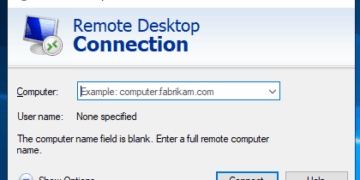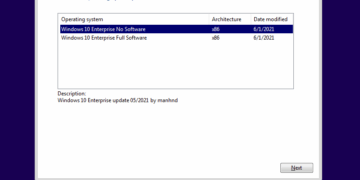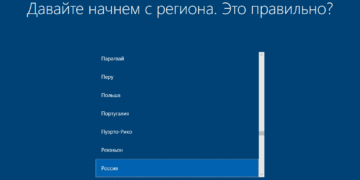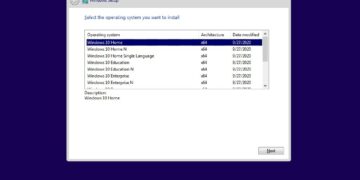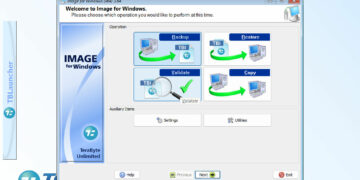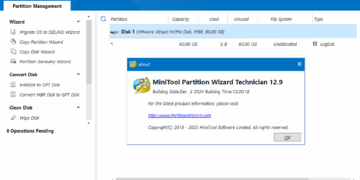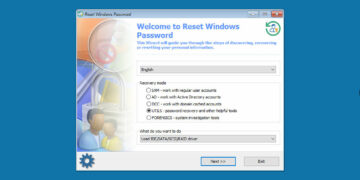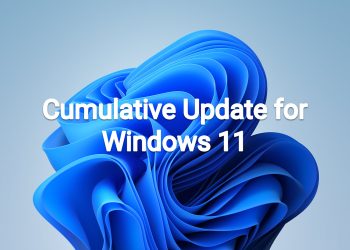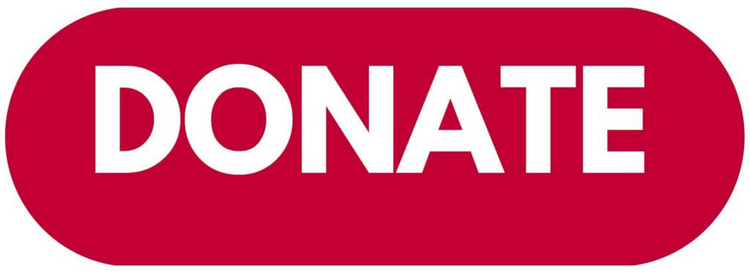11/8/22
IMPORTANT Because of minimal operations during the holidays and the upcoming Western new year, there won’t be a non-security preview release for the month of December 2022. There will be a monthly security release (known as a “B” release) for December 2022. Normal monthly servicing for both B and non-security preview releases will resume in January 2023.
11/8/22
IMPORTANT The retired, out-of-support Internet Explorer 11 desktop application will be permanently turned off as part of the February 2023 Windows security update (“B” release) scheduled for February 14, 2023. Go to Internet Explorer 11 desktop app retirement FAQ for more information.
10/11/22
IMPORTANT All editions of Windows 10, version 21H1 will reach end of service on December 13, 2022. After December 13, 2022, these devices will not receive monthly security and quality updates. These updates contain protections from the latest security threats. To continue receiving security and quality updates, we recommend that you update to the latest version of Windows.
11/17/20
For information about Windows update terminology, see the article about the types of Windows updates and the monthly quality update types. For an overview of Windows 10, version 22H2, see its update history page.
Note Follow @WindowsUpdate to find out when new content is published to the Windows release health dashboard.
Highlights
- New! The search box now appears, by default, on the taskbar when the taskbar is at the top of your screen or when you turn on small taskbar button mode. You can use the search box to discover information and search your PC and the web directly from your taskbar. To configure how search appears, right-click the taskbar of your primary monitor and hover over Search. For more information, see Learn more about search.
- It addresses some persistent update failures for the Microsoft Store.
- It addresses an issue that affects certain printers. The print outputs are misaligned.
- It addresses an issue that affects daylight saving time (DST) in the Republic of Fiji. It cancels DST for 2022.
Improvements
Note: To view the list of addressed issues, click or tap the OS name to expand the collapsible section.
Windows 10, version 22H2
Important: Use EKB KB5015684 to update to Windows 10, version 22H2.
This non-security update includes quality improvements. Key changes include:
- This build includes all the improvements from the supported Windows 10, version 20H2 editions.
- No additional issues were documented for this release.
Windows 10, version 21H2
Important: Use EKB KB5003791 to update to Windows 10, version 21H2.
This non-security update includes quality improvements. Key changes include:
- This build includes all the improvements from the supported Windows 10, version 20H2 editions.
- No additional issues were documented for this release.
Windows 10, version 21H1
Important: Use EKB KB5000736 to update to Windows 10, version 21H1.
This non-security update includes quality improvements. Key changes include:
- This build includes all the improvements from the supported Windows 10, version 20H2 editions.
- No additional issues were documented for this release.
Windows 10, version 20H2 editions: Windows 10 Enterprise Multi-Session, Windows 10 Enterprise and Education, Windows 10 IoT Enterprise
Important: Use EKB KB4562830 to update to the supported editions of Windows 10, version 20H2.
This non-security update includes quality improvements. When you install this KB:
- New! It provides the Quick Assist application for your client device.
- New! The search box now appears, by default, on the taskbar when the taskbar is at the top of your screen or when you turn on small taskbar button mode. You can use the search box to discover information and search your PC and the web directly from your taskbar. To configure how search appears, right-click the taskbar of your primary monitor and hover over Search. For more information, see Learn more about search.
- It addresses an issue that affects some devices that are managed by an enterprise. We improve the reliability of app installations for them.
- It addresses an issue that affects cluster name objects (CNO) or virtual computer objects (VCO). Password reset fails.
- The error message is, ” There was an error resetting the AD password… // 0x80070005”.
- It addresses some persistent update failures for the Microsoft Store.
- It addresses an issue that affects daylight saving time (DST) in the Republic of Fiji. It cancels DST for 2022.
- It addresses an issue that affects Microsoft Direct3D 9 (D3D9). It causes D3D9 to stop working when you use Microsoft Remote Desktop.
- It addresses an issue that affects certain printers. The print outputs are misaligned.
- It addresses an issue that might affect applications that run on the Windows Lock Down Policy (WLDP). They might stop working.
- It addresses an issue that affects Microsoft Defender for Endpoint. Automated investigation blocks live response investigations.
If you installed earlier updates, only the new updates contained in this package will be downloaded and installed on your device.
Windows 10 servicing stack update – 19042.2300, 19043.2300, 19044.2300, and 19045.2300
This update makes quality improvements to the servicing stack, which is the component that installs Windows updates. Servicing stack updates (SSU) ensure that you have a robust and reliable servicing stack so that your devices can receive and install Microsoft updates.
Known issues in this update
| Symptoms | Workaround |
|---|---|
| Devices with Windows installations created from custom offline media or custom ISO image might have Microsoft Edge Legacy removed by this update, but not automatically replaced by the new Microsoft Edge. This issue is only encountered when custom offline media or ISO images are created by slipstreaming this update into the image without having first installed the standalone servicing stack update (SSU) released March 29, 2021 or later.
Note Devices that connect directly to Windows Update to receive updates are not affected. This includes devices using Windows Update for Business. Any device connecting to Windows Update should always receive the latest versions of the SSU and latest cumulative update (LCU) without any extra steps. |
To avoid this issue, be sure to first slipstream the SSU released March 29, 2021 or later into the custom offline media or ISO image before slipstreaming the LCU. To do this with the combined SSU and LCU packages now used for Windows 10, version 20H2 and Windows 10, version 2004, you will need to extract the SSU from the combined package. Use the following steps to extract the SSU:
If you have already encountered this issue by installing the OS using affected custom media, you can mitigate it by directly installing the new Microsoft Edge. If you need to broadly deploy the new Microsoft Edge for business, see Download and deploy Microsoft Edge for business.
|
After installing updates released on November 8, 2022 or later on Windows Servers with the Domain Controller role, you might have issues with Kerberos authentication. This issue might affect any Kerberos authentication in your environment. Some scenarios that might be affected:
When this issue is encountered you might receive a Microsoft-Windows-Kerberos-Key-Distribution-Center Event ID 14 error event in the System section of Event Log on your Domain Controller with the below text. Note: affected events will have “the missing key has an ID of 1“: While processing an AS request for target service <service>, the account <account name> did not have a suitable key for generating a Kerberos ticket (the missing key has an ID of 1). The requested etypes : 18 3. The accounts available etypes : 23 18 17. Changing or resetting the password of <account name> will generate a proper key.
Note This issue is not an expected part of the security hardening for Netlogon and Kerberos starting with November 2022 security update. You will still need to follow the guidance in these articles even after this issue is resolved. Windows devices used at home by consumers or devices that are not part of a on-premises domain are not affected by this issue. Azure Active Directory environments that are not hybrid and do not have any on premises Active Directory servers are not affected.
|
We are working on a resolution and estimate a solution will be ready in the coming weeks. This known issue will be updated with more information when it is available.
|
| After you install this or later updates, you might be unable to reconnect to Direct Access after temporarily losing network connectivity or transitioning between Wi-Fi networks or access points.
Note This issue should not affect other remote access solutions such as VPN (sometimes called Remote Access Server or RAS) and Always On VPN (AOVPN). Windows devices used at home by consumers or devices in organizations which are not using Direct Access to remotely access the organization’s network resources are not affected.
|
If you cannot use the resolution below, you can mitigate this issue by restarting your Windows device.
This issue is resolved using Known Issue Rollback (KIR). Please note that it might take up to 24 hours for the resolution to propagate automatically to consumer devices and non-managed business devices. Restarting your Windows device might help the resolution apply to your device faster. For enterprise-managed devices that have installed an affected update and encountered this issue can be resolved by installing and configuring a special Group Policy. The special Group Policy can be found in Computer Configuration -> Administrative Templates -> <Group Policy name listed below>. For information on deploying and configuring these special Group Policy, please see How to use Group Policy to deploy a Known Issue Rollback. Group Policy downloads with Group Policy name:
Important You will need to install and configure the Group Policy for your version of Windows to resolve this issue.
|
How to get this update
Before installing this update
Microsoft now combines the latest servicing stack update (SSU) for your operating system with the latest cumulative update (LCU). For general information about SSUs, see Servicing stack updates and Servicing Stack Updates (SSU): Frequently Asked Questions.
Prerequisite:
Based on your installation scenario, choose one of the following:
- For offline OS image servicing:If your image does not have the March 22, 2022 (KB5011543) or later LCU, you must install the special standalone May 10, 2022 SSU (KB5014032) before installing this update.
- For Windows Server Update Services (WSUS) deployment or when installing the standalone package from Microsoft Update Catalog:If your devices do not have the May 11, 2021 (KB5003173) or later LCU, you must install the special standalone August 10, 2021 SSU (KB5005260) before installing this update.
Install this update
| Release Channel | Available | Next Step |
|---|---|---|
| Windows Update or Microsoft Update | Yes | Go to Settings > Update & Security > Windows Update. In the Optional updates available area, you’ll find the link to download and install the update. |
| Windows Update for Business | No | None. These changes will be included in the next security update to this channel. |
| Microsoft Update Catalog | Yes | To get the standalone package for this update, go to the Microsoft Update Catalog website. |
| Windows Server Update Services (WSUS) | No | You can import this update into WSUS manually. See the Microsoft Update Catalog for instructions. |
If you want to remove the LCU
To remove the LCU after installing the combined SSU and LCU package, use the DISM/Remove-Package command line option with the LCU package name as the argument. You can find the package name by using this command: DISM /online /get-packages.
Running Windows Update Standalone Installer (wusa.exe) with the /uninstall switch on the combined package will not work because the combined package contains the SSU. You cannot remove the SSU from the system after installation.
File information
For a list of the files that are provided in this update, download the file information for cumulative update 5020030.
For a list of the files that are provided in the servicing stack update, download the file information for the SSU – versions 19042.2300, 19043.2300, 19044.2300, and 19045.2300.
Source: https://support.microsoft.com/en-gb/topic/november-15-2022-kb5020030-os-builds-19042-2311-19043-2311-19044-2311-and-19045-2311-preview-237a9048-f853-4e29-a3a2-62efdbea95e2
Download links
MSU file from Microsoft Update Catalog
Download KB5020030 MSU for Windows 10 v20H2, v21H1, v21H2, and v22H2 32-bit (x86) – 358.6 MB
Download KB5020030 MSU for Windows 10 v20H2, v21H1, v21H2, and v22H2 64-bit (x64) – 693.2 MB
Download KB5020030 MSU for Windows 10 v20H2, v21H1, v21H2, and v22H2 ARM64 – 710.2 MB
UUP Dump
32-bit (x86) ISO download: https://uupdump.net/selectlang.php?i…e-d1248db0a126
64-bit ISO download: https://uupdump.net/selectlang.php?i…8-3a65acd966b6
ARM64 ISO download: https://uupdump.net/selectlang.php?i…9-334198320f25

